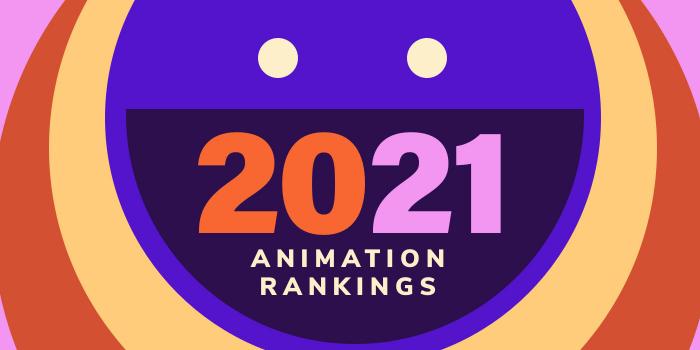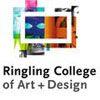
Master 3D modeling for film and video games in under 2 years with CG Spectrum. Get personalized career training online from leading 3D artists from major studios, plus career support and access to a vibrant community. Learn more.

| Ranking | School | State |
|---|---|---|
| 1 | Ringling College of Art and Design | Florida |
| 2 | Savannah College of Art and Design | Georgia |
| 3 | Full Sail University | Florida |
| 4 | University of Central Florida | Florida |
| 5 | Florida State University | Florida |
| 6 | Clemson University | South Carolina |
| 7 | The Digital Animation & Visual Effects School | Florida |
| 8 | University of Florida | Florida |
| 9 | University of South Florida | Florida |
| 10 | University of North Carolina School of the Arts | North Carolina |
| 11 | North Carolina State University at Raleigh | North Carolina |
| 12 | East Tennessee State University | Tennessee |
| 13 | Louisiana State University | Louisiana |
| 14 | Middle Tennessee State University | Tennessee |
| 15 | Tulane University | Louisiana |
| 16 | East Carolina University | North Carolina |
| 17 | University of Louisiana at Lafayette | Louisiana |
| 18 | Georgia Southern University | Georgia |
| 19 | University of Tampa | Florida |
| 20 | Lipscomb University | Tennessee |
Our 2021 list -our tenth annual- of the Top 20 Animation School Programs in the South. For reference, we define the South as Florida, Georgia, Alabama, Louisiana, North Carolina, South Carolina, Kentucky, West Virginia, Tennessee, Mississippi, Arkansas. For an explanation of ranking criteria, click here.

Ringling College of Art and Design (RCAD) was founded in 1931 by Dr. Ludd M. Spivey, president of Southern College (now Florida Southern College) and circus baron, John Ringling. When it opened, the school had just 75 students and 111 course offerings. Today, RCAD serves more than 1,600 students from 45 states, 60 countries, Washington D.C., and Puerto Rico.
This private, not-for-profit college offers BFA degrees in eleven disciplines and BA degrees in two. Students in all programs benefit from RCAD’s “rigorous curriculum” that the school says “employs the studio model of teaching and immediately engages students through a comprehensive program that is both specific to the major of study and focused on the liberal arts.” Students also benefit from visiting artists from major studios such as DreamWorks and Blue Sky Studios, focused internship opportunities, and the chance to work with local businesses on real-world projects.
Program options for aspiring animators include BFA degrees in Computer Animation and Motion Design.
Established in 1990, the BFA in Computer Animation teaches students to “create characters and tell their stories, as well as design, paint, model, texture, animate, light, composite, and edit original films.” Students will combine these technical skills with “conceptually original ideas that affect an audience emotionally, visually, and intellectually.”
Major courses account for 40% of the program curriculum and open electives account for 10%, allowing students to hone their skills in an additional area of interest. Course highlights include 3D Design for Computer Animation, Story Development, Traditional Animation, and Visual Development for Computer Animation.
RCAD graduates have won Emmys, ADDYs, Oscars, and Guggenheim Fellowships, and they have been hired at top creative companies such as Disney, DreamWorks, Google, LinkedIn, Pixar, and many others.
The Motion Design Department at Ringling is recognized as a Houdini Certified School. This 3D procedural animation software is used for motion design, visual effects, game development, and virtual reality. Students in the BFA in Motion Design will master Houdini as well as Cinema 4D, (3D computer animation software), NUKE (compositing and visual effects software), Adobe After Effects (2D computer animation software), Dragon Frame (stop-motion animation software), and the Adobe Creative Suite. They will also study 2D Design, Animation (levels I-IV), Concept Development, and Drawing.
Students will complete a senior project, engage with guest speakers from companies such as Nickelodeon and NBC Universal, and have the opportunity to complete an internship at places such as Leo Burnett, Showtime, Spacejunk, Troika Studio, and Viacom.
Motion Design alumni have started their careers in companies and studios such as Apple, Digital Domain, Disney, Google, Marvel, Nickelodeon, SnapChat, and many others.

Savannah College of Art and Design (SCAD) was founded in 1978. What began in a renovated armory, serving as the first classroom and administration building, has grown into a multi-campus art college with locations in Savannah and Atlanta, Georgia, and Lacoste, France. The school, which serves more than 15,000 students from all 50 states and more than 100 countries, offers 40+ majors and over 75 minors—more degree programs and specializations than any other art and design college.
The School of Digital Media at SCAD has six program options for aspiring animators including a BFA in Animation (Atlanta, Savannah), an MA in Animation (Savannah, eLearning), an MFA in Animation (Atlanta, Savannah, eLearning), and Minors in Animation, Animated Illustration and Publication Design, and Concept Design for Animation and Games. Minor options consist of 25 credit hours of study, and they are offered at the Atlanta and Savannah campuses.
The BFA in Animation consists of 180 credit hours of study, including 80 in the major. Students may choose from four concentrations including 2D Animation, 3D Character Animation, Storytelling and Concept Development, and Technical Animation. Ten hours of additional electives allows students to create a focus in another area of interest.
Students will master 2D and 3D Animation, Character Animation, Digital Modeling, Drawing, Storyboarding, and more. Through Gradpath@SCAD, incoming BFA students will have the opportunity to earn their undergraduate degree and a graduate degree in an accelerated and continuous program of study. The BFA/MA takes as few as four years to complete and the BFA/MFA can be completed in as few as five years.
The MA is a 45 credit hour program that consists of courses such as 3D Cartoon Character Animation, Computer-Generated Modeling and Design, and Environment Look Development. Students in the program will complete a Collaborative Project and the Final Animation MA Project, which “provides students the opportunity to synthesize their learning into a cohesive project piece,” says the school. Students will “propose, develop and execute a project that is then cut into their reel.”
The MFA requires 90 credit hours of study, with many of the same courses as the MA program. Additional courses include titles such as Media Theory and Application, and Storyboarding and Previsualization. MFA students will also complete three thesis courses: Animation MFA Thesis Exploration and Research, Animation MFA Thesis Visual Component Production, and Animation MFA Thesis Completion. A Graduate Internship is also part of the program.
Graduates of SCAD’s animation programs have landed positions at major studios such as Cartoon Network, Nickelodeon, Pixar, and Walt Disney Animation Studios.

Established in 1979, Full Sail University offers AS, BS, BFA, MS and MFA programs in Entertainment, Media, and the Arts. Graduate certificates are also available. Located just 35 minutes from downtown Orlando and Universal Studios, the school also offers unique internship opportunities to its approximately 15,000 students.
Program options for aspiring animators include a BS in Computer Animation that takes 20 months to complete on campus, and 32 months to complete online.
Students can expect to take courses such as 3D Animation, Animation Production, Character Animation, Character Rigging, Compositing and Scene Finishing, Creative Presentation, Historical Archetypes and Mythology, Model Creation, Psychology of Play, Shading and Lighting, Technology in the Entertainment and Media Industries, and Visual Development.
Students will complete two Professional Development Seminars in Computer Animation, Career Readiness: Computer Animation, and seven Project and Portfolio courses including Project and Portfolio I & II: 3D Arts, and Project and Portfolio III-VII: Computer Animation.
In the professional development courses, students will explore the computer animation industry and learn to evaluate, modify, and maintain their personal brand. “Guest speakers will provide students with insight into real-world professional experiences,” says the school. the career readiness course helps students “prepare for the job market and continue to develop their personal brand.”
“Students will learn the best strategies for crafting résumés, cover letters, and deliverable portfolios designed specifically for the computer animation industry. Additionally, students will navigate networking opportunities, the job search, and standard industry practices for employment interviews.”
Full Sail’s Project and Portfolio courses combine “hands-on learning experiences with summative and formative portfolio assessments.” The courses are taken in addition to an internship, which can be pursued after the student has successfully completed 50% of the required credit hours for the BS program.
In 2020, more than 140 Full Sail graduates worked on the year’s Oscar-nominated films, with alumni earning credits on 24 Oscar-nominated projects across 20 categories.

Established in 1963, University of Central Florida (UCF) opened its doors in 1968 as Florida Technological University with 1,948 students. The first graduating class consisted of 423 students, and the school granted its first doctoral degree in 1977. Today, UCF leads all universities in Florida in conferring more than 17,000 degrees a year. Serving nearly 72,000 students, the school is also the largest university by enrollment in Florida and one of the largest universities in the nation.
UCF offers 103 bachelors and 91 master’s degrees, 31 research doctorates, three professional doctorates, and three specialist degree programs in 13 colleges. The College of Arts and Humanities houses the School of Visual Arts & Design (SVAD), home to the Emerging Media Program. Options for aspiring animators here include BFA and MFA degrees in Emerging Media.
UCF’s College of Sciences houses the Nichols School of Communication & Media, Florida Interactive Entertainment Academy (FIEA), which offers an MS in Interactive Entertainment.
The SVAD BFA has two animation tracks: Character Animation and Experimental Animation. The MFA has one animation track: Animation and Visual Effects.
The undergraduate Character Animation Track is a two-year cohort that provides extended experience in working in multidisciplinary teams on realistic problems. Course highlights include 3D Textures, Artificial Environments and Effects, Digital Effects & Compositing, Look Modeling Workshop, and Visual Storytelling and Visual Development. Graduates of the program are prepared to seek careers in animation, modeling, rigging, and texture art in the computer game or film industries.
The undergraduate Experimental Animation Track “offers students the opportunity to explore expression through innovative, hybrid analog and digital practice,” says the school. “Students engage in classic, current, and widely varied techniques and mediums while making narrative or non-narrative creative works.” Course highlights for the program include Advanced Computer Graphic Design, Experimental Animation Workshop, Fundamentals of Interactive Design, Modeling for Realtime Systems, and Narrative Sculpture.
Students in the Experimental Animation Track “develop a unique creative vision, which culminates in the completion of a BFA thesis project and exhibition/screening.”
Students in both Animation Tracks will use industry-leading software on Mac and PC-based platforms to create projects, works, and portfolios.
The Emerging Media MFA, Animation and Visual Effects Track, is a terminal scholarly and creative degree suitable for students wishing to pursue careers as professors in higher education or as creative leaders in industry.
This full-time, three-year cohort program is designed to “emulate the professional studio environment, providing each student with an opportunity to assume an artistic leadership role. The principal emphasis is placed on narrative film structure and the entrepreneurial aspect of animation as related to studio and job creation.” Courses for the program provide “exposure to time-based media, performance art, video art, sound works, kinetic sculpture, computer-based art, and art using the Internet.”
Highlights include Animation and Visual Effects Production, Directing for Animation and Visual Effects, Editing for Animation and Visual Effects, Media and Music for Animation and Visual Effects, Technical Problem-Solving for Animation and Visual Effects, and Visual Development and Design for Animation and Visual Effects, Visual Effects for Animation and Live Action. Students will also learn about guerilla marketing and models of film distribution.
Courses for the MFA program are designed to give students the “ability to understand the collaborative function of a commercial studio.” Labs and studios are equipped with the same industry-standard software and hardware used in professional studios.
Graduates of SVAD’s Emerging Media Program have been hired at major animation and gaming studios such as Blizzard Entertainment Electronic Arts, Nickelodeon Animation Studios, Riot Games, Reel EFX, and Walt Disney Animation Studios. Some SVAD alumni have been hired at companies, government agencies, and other organizations outside of entertainment. Examples include DISTI, Lockheed Martin, NASA, and the U.S. Navy.
The MS in Interactive Entertainment provides specific skills in the area of 3D artistry, game design, and programming as well as essential skills such as problem solving, project management, and teamwork.
Per the school, “student production teams are mentored by industry trained faculty who provide instruction in” 3D animation and modeling, game design, level design, motion capture, postmortems, preproduction, rapid prototyping, software engineering, and technical design. The program also covers creative collaboration and legal and technical issues.
Students may choose between three specializations including Art, Production or Programming. Each specialization requires nine credit hours of study. Students in all specializations will complete a three credit hour capstone that will allow them to complete a large-scale project. A six credit hour practicum allows students to engage in supervised training with a research team, through an on-site internship, by developing a start-up, or with a faculty member on research in an area of interest.
Graduates have access to internship and venture opportunities as well as job interviews with media and game companies from across the country.

Florida State University (FSU) was founded in 1851 and it serves more than 40,000 students making it one of the largest and oldest of the 11 institutions of higher learning in the State University System of Florida. The school offers baccalaureate degrees in 106 programs, master's degrees in 113 programs, advanced master's/specialist degrees in 14 programs, doctorates in 70 programs, and three professional degrees. The university also offers fully accredited professional programs in law (J.D.), medicine (M.D.) and nursing.
Programs are offered in eight colleges and eight schools in Tallahassee and at branch campuses in Panama City, Florida, and the Republic of Panama, and off-campus instructional sites in Sarasota, New York, and the St. Petersburg College University Partnership Center in Seminole. The College of Medicine has regional campuses in Daytona Beach, Ft. Pierce, Orlando, Pensacola, Sarasota, and Tallahassee. Some programs are available entirely online.
Programs for aspiring animators are offered in the College of Motion Picture Arts, home of the FSU Film School. Options include a BFA degree in Animation and Digital Arts and BFA and MFA degrees in Motion Picture Arts Production. The Motion Picture Arts programs allow students to learn both filmmaking and animation skills through core requirements and electives. Course highlights include 3D Computer Animation, 3D Computer Graphics, Character Animation, Compositing, History & Practice of Visual Effects and Animation, Lighting, Texturing and Rendering, Stop-Motion Animation, and Visual Effects.
The Animation and Digital Arts degree is a three-year program within a four-year degree that provides the opportunity for students to “explore the evolution of filmmaking and master the tools and practices of today’s industry,” says the school. During the first year of the programs, students will work in collaboration with other Film School students on foundational coursework. For animation students, following is a “deep dive into the tools and techniques of 3D animation.”
Course highlights include Character Animation, Character Art, Lighting, Texturing, and Rendering, Motion Picture Editing, Reality and Illusion in World Cinema, Story Development & Screenwriting, and of course, 3D Animation.
Other program highlights include the opportunity to work alongside industry professionals, the chance to make create four major films before graduation, one of which is an area-specific thesis film, and participation in the Torchlight Program.
The Torchlight Program gives FSU animation students who would like to freelance or start their own studios the opportunity to learn about current and emerging business practices of the motion picture industry. This non-degree-granting academic program “functions as a gateway between school and career by providing instruction in current and emerging business practices of the motion picture industry,” says the school. The program offers coursework in key areas such as Distribution, Marketing, and Motion Picture Financing.
FSU Torchlight students “have had the opportunity to present, market, publicize, promote and otherwise theatrically distribute a stunning array of independent motion pictures in a variety of markets throughout the United States and Canada.”
FSU College of Motion Picture Arts graduates are prepared to seek positions such as Animatics Supervisor, Animation Supervisor, Animator, CG Lighter, Effects Animator, Modeler, Rigger, Storyboard Artist, Visual Effects Coordinator, and many others.

Clemson University opened its doors in 1893 as Clemson Agricultural College. When it opened, the school had just 446 male students. Today, the school serves a co-ed population of nearly 26,000 students enrolled in 80+ majors, 80+ minors, and 130+ graduate degree programs in more than a dozen colleges and schools.
The College of Engineering, Computing and Applied Sciences houses the School of Computing, which offers 10 degree programs and two minors. Programs for aspiring animators include an MFA in Digital Production Arts (MFA DPA), an MS in DPA (MS DPA), and a Minor in DPA.
The DPA MFA Program is a professional degree program that offers a unique blend of instruction in art, computer science, computer engineering, graphic communications, performing arts, philosophy, and psychology, combined with courses targeted at production techniques specific to the animation, visual effects, and electronic games industries. Course highlights include 3D Modeling, Compositing, Computer Animation, Computer Games, FX, Lighting, Rigging, Simulation, and Visual Effects.
The MFA has a mandatory thesis with a DPA focus. Topics include animation, video game design, virtual reality, and visual effects, among others.
MFA DPA program graduates have worked on films such as Frozen, Hobbit, How to Train Your Dragon, Rio, and The Croods. DPA alumni can be found working at industry leaders such as Blue Sky Studios, DreamWorks, EA, ILM, Pixar, ReelFX, Sony Pictures Imageworks, and Walt Disney Animation Studios.
The MS DPA has course only or thesis options that “center on the tools and programming of computer graphics topics including animation, video games, and virtual reality,” says the school. Course highlights for the program include 2D Game Engine Design, 3D Modeling and Animation, Advanced Animation, Audio Engineering, Character Animation, Improvisation, Physically Based Visual Effects, Virtual Reality, Visual and Foundations for Digital Production.
MS DPA students will have the skills needed to pursue employment as a 3D graphics programmer, software engineer, tool builder, and/or technical director in digital production entertainment. Interests may also include related fields such as 3D printing, commercial virtual reality, and visualization.

The Digital Animation & Visual Effects School (DAVE School) was founded in 2000 by two industry executives looking to create “career ready” artists with practical animation skills. When it opened, the school says that it offered “specialized training in Visual Effects with extensive practice under industry level supervision.” The DAVE School introduced fully online bachelor’s degree programs in Motion Graphics in 2017, along with on-campus bachelor’s degrees in Visual Effects and Game Production. Diploma programs in Game Production and Visual Effects are also available.
Diploma programs take 12 months to complete and bachelor’s degree programs may be completed in just 36 months. All programs offer the opportunity to learn animation through required and elective coursework. Highlights include Advanced Color Theory & Design, Digital Illustration, Digital Modeling and Sculpting, Dynamics and Visual Effects for Motion Graphics, Emerging VFX Tech & Pipelines, Fundamentals of Computer Animation, Motion Graphics Production I & II, and VFX Compositing.
The DAVE School is located in an 18,000 square foot facility situated on the backlot of Universal Studios Florida, Soundstage 25, providing unlimited access to learning and interactive labs, a dedicated Virtual and Real-Time production stage, a Vicon motion capture system, and 3D printing and VR/AR labs.
DAVE school graduates and instructors have worked on major productions such as Avengers: Age of Ultron, Captain America, Game of Thrones, Godzilla, Green Lantern, Jurassic World, Rogue One: A Star Wars Story, Terminator Genisys, The Hobbit, The Hunger Games, and many others.

University of Florida (UF) was founded in 1858 by James Henry Roper—an educator from North Carolina and a senator from Alachua County. The small school known as Gainesville Academy opened with just a few students. Today, UF sits on a 2,000-acre campus with more than 900 buildings, including the first Leadership in Energy and Environmental Design (LEED) Platinum-certified building in the state of Florida, and it serves around 56,570 students. Programs include 30 certificates, 100 undergraduate majors, and 200 graduate programs in 14 colleges and schools.
Established in 1925, the College of the Arts offers fully accredited schools of Art and Art History, Music, and Theatre and Dance, as well as the Center for Arts in Medicine and the Digital Worlds Institute, which offers a BA in Digital Arts & Sciences (BADAS). Students in the BADAS program have the opportunity to choose elective courses from the Institute’s current offerings in Animation, Game Design, and Digital Production.
Animation students will learn industry-standard techniques for film, video game, and interactive media content creation, apply the 12 Principles of Animation to bring characters to life, and develop concepts and skills to create compelling stories through animation. Course highlights include 2D and 3D Digital Animation Techniques, 3D Character Animation, Creating Mobile Games, Digital Storytelling, Writing for Interactive Media, and Production of Immersive Environments.
Students in all areas have the opportunity work at LUMA at Digital Worlds Institute. The student-run digital media production group was founded with a goal of providing talented students the opportunity to work on real-world projects. LUMA offers creative services to members of the UF and Gainesville communities.
Graduates of the BADAS will have experience working in collaborative teams on media projects including digital storytelling, animation, and game design including serious and applied games. Program alumni have landed positions such as Animator, Character Artist, Character Modeler, Digital Storyteller, Rigger, Storyboard Artist, Technical Animator, Visual Effects Artist, and many others.

Founded in 1956, University of South Florida (USF) is one of the world’s top research institutions, achieving Preeminent State Research University Status in 2018. The school serves more than 50,000 students at campuses in Tampa, St. Petersburg, and Sarasota-Manatee. More than 180 undergraduate majors and degree programs at the graduate, specialist and doctoral levels are offered in 14 colleges.
USF’s College of Arts provides training to aspiring actors, architects, art historians, dancers, designers, and musicians. Within the College’s School of Art & Art History are several programs for aspiring animators including BA, BFA, and MFA degrees in Studio Art. All programs offer a Concentration in Animation and Digital Modeling. A Studio Art Minor is also available and a Certificate in Visualization and Design is offered in collaboration with the USF Zimmerman School of Advertising & Mass Communications.
The 24 credit hour Studio Art Minor allows for studio experience in Animation and Digital Modeling, Sculpture & Extended Media, Video, and many other areas. The Certificate consists of 18 credit hours of study that blends fine and commercial art. 2D Animation, Live Action Filmmaking, and Video, Animation, and Digital Arts (VADA) are just a few course highlights for the program.
The BA and BFA Animation and Digital Modeling curriculum “engages students in the development of both 2D and 3D animation as well as the production of virtual 3D objects for fine art, film, games, and visualization,” says the school. “Combining cutting-edge technology with a foundation of the design process, craft, and studio art practices, students gain an invaluable skill set as they progress through their courses.”
Initial courses allow students to gain a foundation in the tools and principles involved in animation, digital imaging, and video. Intermediate coursework covers production workflows and experimental approaches and advanced courses help students develop “their personal creative voices as they produce self-directed projects.” Course highlights include 3D Animation, Beginning and Advanced VADA, Baroque and Rococo Art, Computer Animation, Concepts & Practices, Digital Modeling, History of Visual Arts, Intermediate Drawing, and Tech Essentials.
Students in the BA Program will complete “Extended Studies.” Options within this two-credit requirement include the Paris Program, Public Art, Museum Internships, Community Art, Artists Internships/Apprenticeships, and the London Middlesex Program.
BFA students will complete this requirement as well, which includes an internship or study abroad experience. A thesis is required as well.
The MFA in Studio allows students to focus their studies in one area or a combination of areas. In addition to Animation and Digital Modeling, students may focus in Ceramics, Drawing, Painting, Photography, Printmaking, Sculpture and Extended Media, or Video. All MFA students have the opportunity to work alongside “some of the most notable artists today at the USF Institute for Research in Art.”
Students also have the opportunity to travel to Miami art fairs, as well as to New York, Paris, London, and Venice. Students “frequently participate in and are awarded scholarships to prestigious residency programs including Vermont Studio School, Skowhegan, Atlantic Center for the Arts, Yale-Norfolk, and others.”
Graduates are able to use their experiences from the programs in a broad range of disciplines. Animation, Visual Effects, Game Design, and Filmmaking are just a few.

The University of North Carolina School of the Arts (UNCSA) was founded in 1963 as America’s first public arts conservatory. The school, which opened its doors in 1965, became part of the 17-campus University of North Carolina system in 1972. Today, UNCSA serves nearly 1,350 students enrolled in dozens of programs through five schools including Dance, Design & Production, Drama, Filmmaking, and Music. Programs for aspiring animators are offered in the Filmmaking School and the School of Design and Production.
The Filmmaking school offers a BFA in Animation that consists of 121 credit hours of study. Students take 85 credit hours in Filmmaking, 30 in General Education, and six in Liberal Arts or Designated Arts Course.
Course highlights include Fundamentals of Screenwriting, Fundamentals of Sound Design, Introduction to Animation I & II, Intensive Arts, Animations Foundations I & II, Storyboarding I & II, The History of Experimental & Stop-Motion Animation, International Animation, Advanced Computer Animation I & II, and Computer Graphics I & II.
Classes consist of lectures, workshops, and individual projects, allowing students to add to their portfolios as they progress through the program. The third year consists of the development, pre-production, production, and post-production stages of a three-minute animation project. Students will also begin the development and pre-production phases of the fourth-year animation project.
During the fourth year, students will complete a five-minute thesis animation project and they will have the opportunity choose an independent study or professional internship. Students have interned at major studios such as Sony Pictures Imageworks and Stargate Studios.
Graduates of the Animation Program at UNCSA have established careers with Cartoon Network, Prologue Pictures, and many others top companies.
The School of Design and Production offers a unique MFA program in Animatronics—a hybrid if animation and electronics. Per the school, “the Animatronics graduate program harnesses opportunities presented by constantly evolving technology, preparing students for success in careers at the intersection of arts and technology.” Students in the program will learn to create animatronic figures and props through hands-on experience, and they will study engineering and infrastructure of animatronic figures. Practical courses in animatronics project management are also part of the program.
Course highlights include 3D Design, Sculpting and Animatics, Animatronic Design, Figure Design and Engineering, Production, and Prototypical Project Management.
During the final year of this three-year program, students will learn to design figure finishings including costumes, fur and wigs, with a special focus on maintenance, boning and costume structure. Additionally, students will become “adept at animatronic programming—a practice rooted in animation functions, range of motions and speeds.”
To enhance learning outcomes for students, guest artists, industry leaders, and seasoned storytellers will provide timely industry insight through seminars and workshops. The program will culminate with a research-based thesis project conducted under the supervision of a thesis advisor.
Nearly all Animatronics MFA graduates have gone on to start careers in their chosen fields.

Established in 1887, North Carolina State University (NC State) began as a land-grant institution focusing in agriculture and research. Today, the school says it is a leader in “agriculture, education, textiles, business and natural resources.” Serving more than 36,000 students, NC State is also one of the nation’s largest schools, offering over 300 degree programs in 12 colleges and 60+ academic departments.
The College of Design, Department of Art + Design, offers several programs for aspiring animators. Programs include a Bachelor of Art + Design: Animation + Interactive Media, a Masters of Art + Design (MAD): Experimental Media Arts with an Animation and Digital Storytelling Area and a Minor in Art + Design.
The undergraduate animation program “gives students the opportunity to learn as they develop their creative portfolios through a wide-range of two-dimensional and three-dimensional traditional materials and computer-based processes.” These include “drawing and illustration, visual composition, soft materials construction, fibers, graphic and interactive narratives, motion graphics, visual effects, animation, web design, game design, interactive and computational media, virtual and augmented reality, 3D modeling, digital fabrication, and more.”
Animation students will take studios that introduce them to Principles of Storytelling, Animation, and Character Design through Sequential Imaging, along with courses such as Advanced Writing, Design Thinking, Digital Imaging, and Drawing. Students will have the opportunity to complete an internship and participate in the Art + Designer Showcase.
The MAD program focuses on Experimental Media Arts, such as Animation & Digital Storytelling and Computer Gaming & Serious Games. The program encourages students to explore the intersection of digital and material technologies to create interactive and engaging experiences that push the boundaries of storytelling, learning and play.” Course highlights include Coding for Designers, Digital Modeling, Digital Motion, Seminar in Animation, Sequential Imaging, Special Effects, Storytelling Through Films, and Visualizing Narratives.
Students in the MAD program have the option of doing a final project or a more theoretical and research-based paper or study.
Graduates of the animation programs at NC State are prepared to work on short and full-length animated films, in character development for animated films, games, and digital storybooks, and on interactive and experimental projects.

Founded in 1911 as East Tennessee State Normal School, East Tennessee State University (ETSU) serves more than 14,500 undergraduate, graduate and professional students. The school offers more than 350 programs across 11 colleges and schools. Part of the College of Business and Technology, the Department of Engineering Technology, Surveying, and Digital Media offers a BS in Digital Media (BS DIGM) with a Concentration in Digital Animation, a DIGM Minor, and a New Media Studio MA.
Per the school, Digital Animation “gives students the background necessary to animate in any media/software with strong skills in one of several specialty areas of animation, such as character animation and special effects animation.” Course highlights for the program include Acting I, Animation Fundamentals Character Animation Laboratory, Motion Tools, Technical Direction for Animation, Interactive Design, Raster-Based Imaging Laboratory, 3D Effects Animation, 3D Lighting & Rendering, and Special Topics in Digital Media.
The MA Program covers 3D Animation, Gaming, Motion Capture, Visualization, Video and Special Effects, Digital Illustration, and Graphic Design. The DIGM Minor offers courses such as Animation Fundamentals, 3D Animation, Fundamentals of Character Animation, Effects Animation and Lab, 3D Model Design, Motion Tools, and Interactive Development.
Graduates of the Animation Programs at ETSU are prepared for careers in 3D animation, 2D animation, motion graphics, character animation, technical direction, and many others.

Louisiana State University (LSU) welcomed its first class on January 2, 1860. Today the school is in the elite 1% of U.S. universities having land-, sea-, and space-grant designations.
LSU provides more than 235 academic fields of study in 15 colleges and schools to 34,290 students. The College of Art + Design serves nearly 1,200 students and it houses the School of Art, which offers several multidisciplinary programs for aspiring animators. Pathways include a BFA in Studio Art with a Concentration in Digital Art and an MFA in Digital Art. The programs allow students to refine their skills in classes that provide a broad, integrated understanding of creative practice across 3D modeling, animation, digital printmaking, interactive systems, photo-based media, video, and the web.
The school says it teaches “the expressive potential of hybridized technologies and democratized tools to engage with diverse audiences.” Emergent forms are emphasized, and “student work may manifest through integrated media including animation, games, visual effects, networked art, robotics, physical computing, printed matter, performance, public intervention, audio composition, installation, and digital fabrication, among limitless combinations.”
Another option in the School of Art is interdisciplinary Master in Digital Media Arts & Engineering (DMAE). A 21-credit-hour Minor in DMAE is also available. This program is a collaborative endeavor with seven campus units at LSU.
Students in all programs have access to the Arts, Visualization, Advanced Technologies and Research (AVATAR) Initiative and The Digital Art and Design Association (DADA). Both provide support to Digital Art students as they pursue “opportunities throughout the university and the broader community.”

Middle Tennessee State University (MTSU) opened on September 11, 1911 as one of three state normal schools for teacher training. The school serves nearly 22,000 students enrolled in more than 300 undergraduate and graduate degrees of study in diverse disciplines that prepare students for high-demand careers.
Programs are offered more than a dozen colleges and schools. The College of Media and Entertainment at MTSU houses the Department of Media Arts, which offers a BS in Animation and a 15 credit hour Minor in Animation. The School of Journalism offers an MS in Media and Communication.
Per the Department, “the Animation major is designed for those who wish to work professionally in animation and/or imaging, including character animation, video games, motion graphics, visual effects, simulation and visualization, and image manipulation. This program blends theoretical and hands-on approaches to traditional and digital animation. Students are encouraged to complete their education with internships in professional settings.” This 120 credit hour program requires a Minor in Art.
Students in the MS program (both the thesis and non-thesis option) may choose six hours of approved electives in Animation. Specializations for the program include Advertising, Health Communication, International Communication, Journalism, Management, Media Law, Public Relations, and Traditional/New Media.
Assistantships are available for MS students, as well as awards, fellowships, and other financial support.
The Animation Programs at MTSU prepare students for careers in character animation, motion graphics, visual effects, and many others. Students are prepared to create animated and feature films, as well as content for documentary films, educational videos, and television.

Founded in 1834, Tulane University is ranked by the Carnegie Foundation for the Advancement of Teaching as a university with “very high research activity," placing it in the top 2% of universities nationwide in terms of research. The school is also the first major research institution to require public service for graduation. Tulane serves more than 12,000 students enrolled in over 300 programs in nine schools. The School of Professional Advancement (SoPA) has several program options for aspiring animators including a BA, Minor, and Graduate Certificate in Digital Design with a Specialization in Game Art & Animation.
The BA program offers a diverse array of courses ranging from Character Modeling to User Experience Design and Social Media to Corporate Identity and Environmental Design. The program allows for the most courses and electives during the student’s time at Tulane SoPA. This degree program allows thorough portfolio development and the greatest flexibility for students wishing to take courses in other tracks such as Interactive Design or Graphic Design.
The Minor consists of 18 total credit hours and the Graduate Certificate consists of 30 total credit hours. The Minor complements other degree tracks, while the Certificate is designed for students who have already earned a bachelor’s degree in a related discipline. The Certificate Program places an emphasis on studio time in order for students to enhance their portfolio work.
Students in all programs will participate in activities beyond the classroom through conferences and community networking events. Internship opportunities are also part of the programs.

East Carolina University (ECU) was founded in 1907 as a teacher training school. Today, the school serves around 28,800 students, making it the third largest university in the state. East Carolina University offers more than 200 undergraduate, graduate and minor programs through 12 colleges and schools. The College of Fine Arts & Communication houses the School of Art and Design (SoAD), which offers a BFA in Art with a Concentration in Animation/Interactive Design (AID).
Coursework for the 126 credit hour program covers digital media applications such as game design, interaction design, and video art. Course highlights include Advanced Interactive Media, Animation, Digital 3D Animation, Digital 3D Lighting and Rendering, Electronic Interactive Multimedia, Intermediate Video Art, and Introduction to Digital 3D Modeling.
During the final year of the program, AID students will complete a senior exhibition, portfolio, reel, or film. Students will leave the program with experience in creating digital environments with 2D animation, character design, and game design.

Founded in 1898, the University of Louisiana at Lafayette began as the Southwestern Louisiana Industrial Institute. The school had no campus, no students, and no instructors. Today, the University of Louisiana at Lafayette sits on a 1,300-acre campus and it serves more than 19,000 students, making it the second largest university in Louisiana.
More than 80 majors and over 30 graduate programs are offered through more than a dozen colleges and schools. The College of the Arts houses the Department of Visual Arts. Implemented in 1992, the Department has the oldest established computer animation program in the state.
Consisting of 120 credit hours, the BFA in Visual Arts with a Computer Animation Concentration provides the opportunity for students to learn “the artistic and technical application of digital motion graphics,” says the school. Students will learn concept development along with animating, compositing, creating animatic studies, scriptwriting, storyboarding, and video and audio editing.
Graduates of the program have worked on films at Pixel Magic in Lafayette, Louisiana including Harry Potter and the Deathly Hallows, Looper, Men in Black, The Chronicles of Narnia: The Voyage of the Dawn Treader, and The Twilight Saga: Breaking Dawn, and many others.

Founded in 1906, Georgia Southern University serves nearly 27,000 students making it the state’s largest center of higher education south of Atlanta. The school offers approximately 140 different degree programs across three campuses and in 10 colleges.
The College of Arts and Humanities houses the Betty Foy Sanders Department of Art (BFSDoArt), which offers a BA in Art, Concentration in Studio and a Minor in Animation & New Media. Consisting of 124 credit hours, the BA Program allows students to select 21 hours from a list of Exploratory Studio Art Courses. Examples include 3D Animation, Animation I & II, Digital Dimensions, Drawing I, II & III, and Environmental Art. Students will also take required courses such as 2D and 3D Art & Design Foundations and Digital Art & Design Foundations.
Students in the program are required to declare a Minor consisting of at least 15 credit hours. To enhance the degree, BA students typically choose the Animation & New Media Minor. Other options include Film Studies, Multimedia Film Production, Photography/Digital Imagine, Studio Art, and Writing, to name a few.
During the final year of the BA program, students will complete a required Studio Art Capstone, Senior Portfolio and Senior Exhibition, or Senior Seminar and Senior Exhibition.
Students in all programs have the option to spend a summer in the UK. The study abroad program (Animation UK Summer Abroad in Sheffield UK) includes a studio course in animation with projects exploring character development, storytelling, and virtual lights/cameras with an introduction to software and concepts in 2D animation, sound, and web streaming. At the end of the course, students will present their animation productions through a collaborative exhibition in a gallery in Sheffield.

The University of Tampa (UT) began classes in 1931 as Tampa Junior College with just 62 local students. Today, the school serves 9,605 students from all 50 states ad 130 countries. The school offers more than 200 academic programs of study in four colleges including the College of Arts and Letters, Natural and Health Sciences, Social Science, Mathematics and Education, and Sykes College of Business.
The College of Arts and Letters (CAL) is home to 22 degree programs, 11 minors, and an MA in Professional Communication. Programs are offered through eight academic departments, including the Department of Film, Animation and New Media. Here, aspiring animators can earn a BFA in Animation. An Animation Minor is also available.
In the Department of Film, Animation and New Media, “students learn by doing and thinking with courses in studio production, using state-of-the-art facilities, computer labs, digital cameras and production suites,” says the school. Focusing on 2D and 3D computer animation, motion effects, CGI, and visual and advanced software applications, the BFA in Animation helps students develop visualization, coding, 3D modeling and printing, rigging, illustration and storytelling skills.
Course highlights for the program include 2D and 3D Animation, Animation for Interactivity and Games Creative Coding, Digital Illustration, Digital Media, Experimental Filmmaking, Mobile Application Production, Motion Performance Capture, Multimedia Installation, Screenwriting Shorts, Sound, Image and Motion, and Visual Effects. An internship is also part of the program. UT students have worked at Legend 3D in Los Angeles and Sony Music Entertainment in New York, as well as local companies and studios such as Blue Water Media, Diamond View Studios, Film Tampa Bay, Spectrum, and Theory Studios.
The BFA in Animation program “culminates with a senior project capstone class where students develop individual or collective industry standard animations or projects to be included in their professional reels and portfolios, as well as archived in the UT library's institutional repository.” Graduates of the program will “seek roles as creative artists within various aspects of the animation and digital media industry, involving gaming, special effects, advertising, internet media and more.”

Lipscomb University was founded in 1891 as the Nashville Bible School. Located in the heart of Nashville, this Christian liberal arts institution serves 4,595 students enrolled in over 176 undergraduate majors and minors, 60 master's degree programs, and three doctoral degree programs in 10 colleges.
The George Shinn College of Entertainment & The Arts houses the animation program and it is the only school in the world to have two former Disney supervising animators as instructors—Tom Bancroft and John Pomeroy. Within the Shinn College is the Department of Visual Arts and the BA, BFA, and Minor in Animation programs.
Students in all programs will become experts in Maya—the industry standard in computer graphics and CGI effects. They also have the option of taking on opportunities in Los Angeles, the department’s LA internship program, as well as a yearly trip to work at an animation studio there. Course highlights for the program include 2D Character Animation, Action Analysis, CG Modeling and Lighting, Computer Animation I-IV, Concept Development, and Storyboarding for Animation.
Students in both degree programs will complete an Animation Capstone and students in the Minor program will complete 18 credit hours of study. Graduates of the Animation Programs at Lipscomb University go on to become 2D and 3D Animators, Computer Animators, Storyboard Artists, and more.